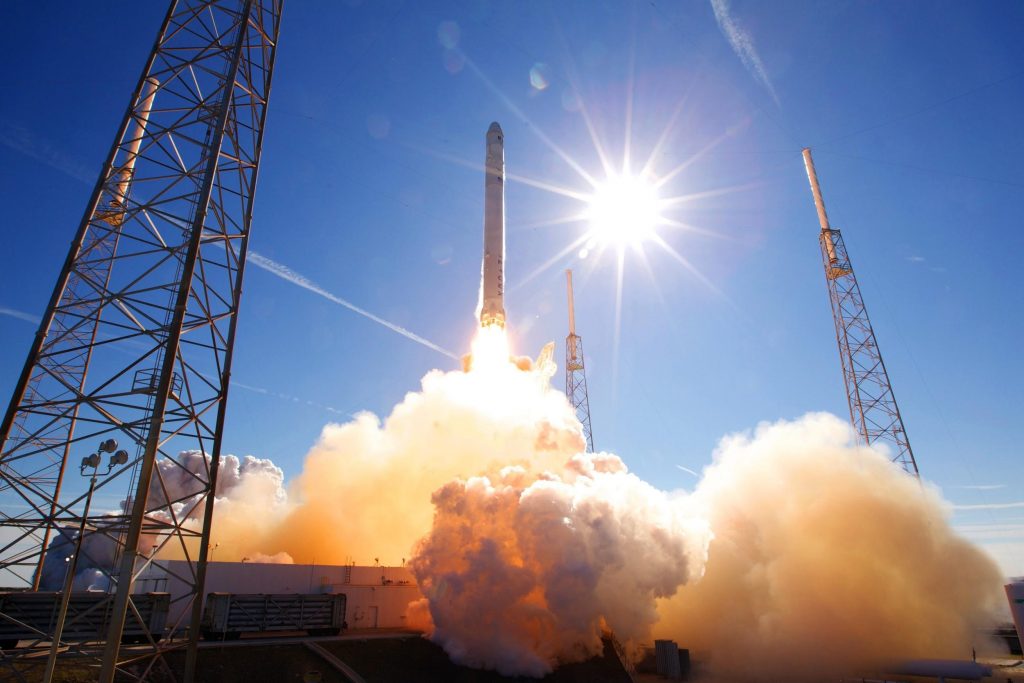InTrans / Feb 10, 2017
Final frontiers: Space odyssey
Go! Magazine
 posted on February 10, 2017
posted on February 10, 2017
“The final frontier” is a description of space used in Star Trek, a science fiction TV show. In this article series we’re talking about different “final frontiers,” or, in other words, we’re exploring the largely unknown territories of this world (and beyond). What better place to start than outer space?
Early recorded history tells us that humans have been fascinated with the night sky for thousands of years; early Chinese, Egyptian, Babylonian, and Mesopotamian civilizations, in particular, kept a close watch over the sky. Sundials, shadow clocks, and observatories helped early civilizations better understand it.
But humans didn’t get a close-up look at space until more recently. In fact, the first telescopic observation of the night sky wasn’t until 400 years ago, in 1610, when Galileo Galilei invented the telescope. He is considered the father of observational astronomy. That said, the human race wouldn’t get to see space close-up, with their own eyes, until even more recently than that.
Manned space travel
A voyage into space, rather than observing it from afar, began with the Soviet Union’s Sputnik 1, the first artificial Earth satellite. Launched in 1957, the satellite was essentially a polished metal sphere with four external radio antenna that broadcast radio pulses to Earth. Tracking and studying Sputnik 1 from afar provided scientists with valuable information, signifying man’s first reach into the final frontier.
The first manned spaceflight would come shortly after that, when Soviet cosmonaut Yuri Gagarin orbited Earth on April 12, 1961. Thanks to the Vostok (the spacecraft built by the Soviet Union), Gagarin accomplished the first human spaceflight in history. Shortly thereafter, Alan Shepard, Jr. became the first American in space on May 5, 1961, aboard the Mercury-Redstone 3.
Since then, there have been countless more journeys into space, including man’s landing on the moon. The first two humans on the moon were Americans Neil Armstrong and pilot Buzz Aldrin, when Aldrin successfully landed the Lunar Module on the moon in 1969.

The Lunar Module was capable of operating only in outer space, structurally and aerodynamically incapable of flight in Earth’s own atmosphere.
Mars: The next frontier?
But humankind hasn’t stopped there, as there’s much more outer space to be explored. Mars is the next big, and relatively unknown, frontier when it comes to human space exploration. Although Mars is a considerable distance from our own planet (about 249 million miles on average), there have been countless efforts to study and understand this fantastic planet.
In fact, a man named Elon Musk wants to see humans inhabit Mars—meaning actually live on it— in the next 40 years or so. Musk founded Space Exploration Technologies Corporation, or simply “SpaceX,” in March 2002, to “revolutionize space technology, with the ultimate goal of enabling people to live on other planets.”
Unlike the National Aeronautics and Space Administration (NASA), which serves as an independent agency of the executive branch of the US federal government, SpaceX is a privately-owned company, the first to ever return a spacecraft from low-Earth orbit (with the Falcon 9 launch in 2010). Musk hopes to continue to break barriers with his company.

To infinity and beyond
So, what do you think? Will humans actually live on Mars? Would you?
Musk says it’s not about moving all the humans to Mars, but rather becoming an “interplanetary species.”
Exploring these final frontiers and uncharted territories requires a brave few to step out of their comfort zone and into the unknown. Exploring space can be dangerous, even life-threatening, but it wouldn’t be the first time that risks have been taken in the name of discovery!
References
http://science.nationalgeographic.com/science/space/space-exploration/early-manned-spaceflight/
https://en.wikipedia.org/wiki/Timeline_of_space_exploration
Related links
(Video) SpaceX: https://www.youtube.com/watch?v=ujX6CuRELFE
(Video) Life on Mars: https://www.youtube.com/watch?v=ujX6CuRELFE
(Article) Early manned spaceflight: http://science.nationalgeographic.com/science/space/space-exploration/early-manned-spaceflight/
(Video) Interplanetary Transport System: https://www.youtube.com/watch?v=0qo78R_yYFA
By Hannah Postlethwait, Go! Staff Writer